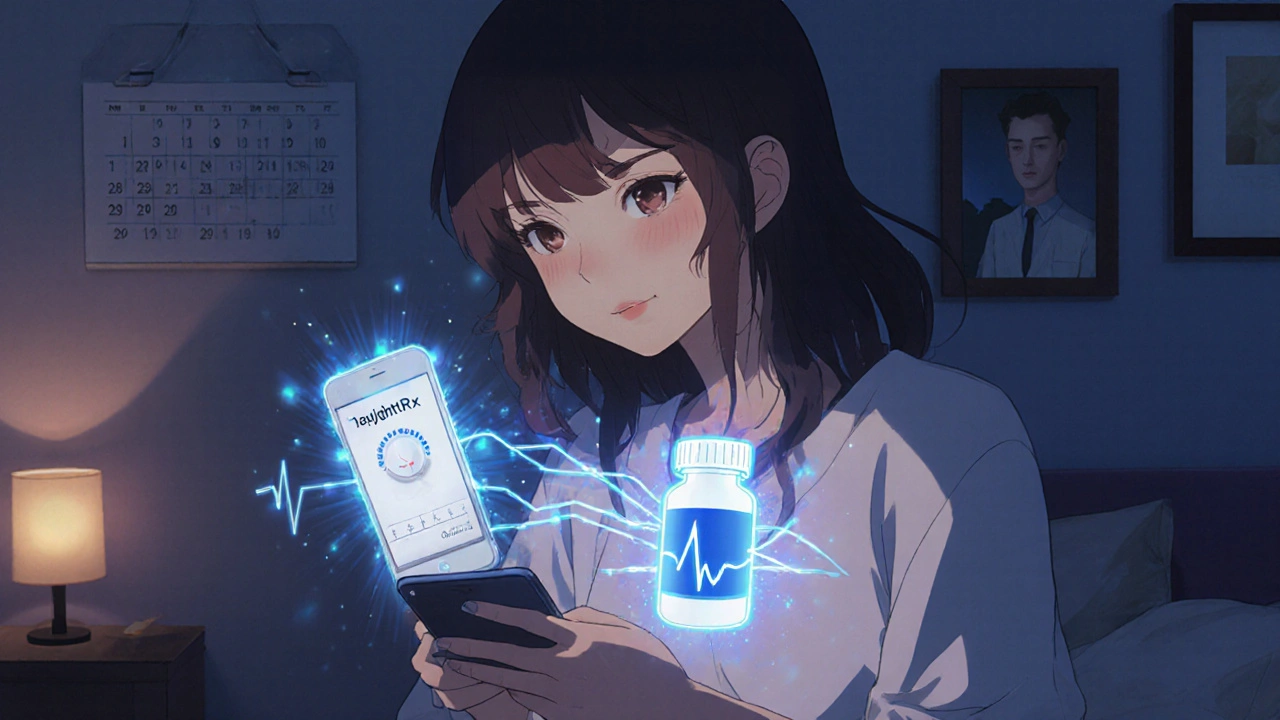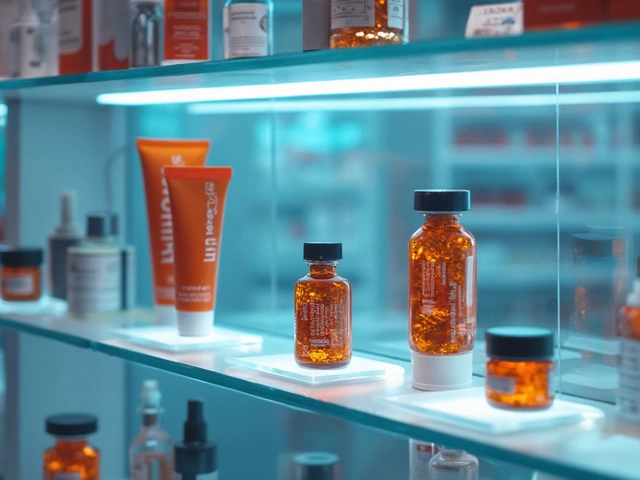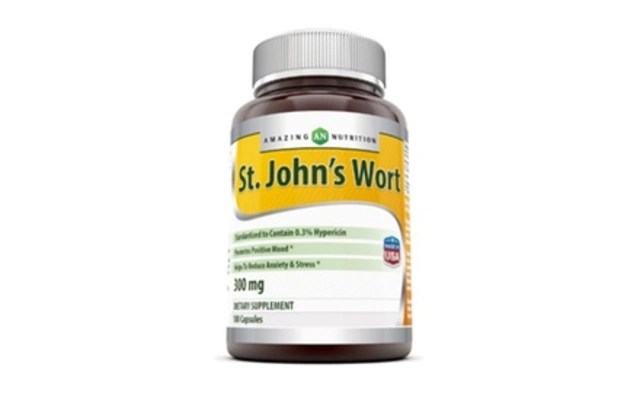DTx Medication Interaction Checker
Check Digital Therapeutic Safety
Enter your condition and current medications to see if a digital therapeutic might interact with your treatment plan.
Recommended Digital Therapeutics
After selecting a digital therapeutic, you'll see specific safety information here.
By 2025, digital therapeutics aren’t just a trend-they’re a standard part of care for millions of people managing chronic conditions. These aren’t fitness apps or meditation tools. They’re FDA-cleared software programs designed to treat diseases like diabetes, anxiety, and ADHD-often alongside prescription drugs. But here’s the catch: when software becomes part of your treatment plan, it doesn’t just talk to your phone. It talks to your pills. And that’s where things get complicated.
What Exactly Are Digital Therapeutics?
Digital therapeutics (DTx) are software-based treatments that deliver clinical interventions through apps, wearables, or virtual reality. Unlike wellness apps, DTx are regulated like medicine. The FDA cleared its first one-reSET for substance use disorder-in 2018. Since then, over 100 have gained approval. The latest, DaylightRx, was cleared in September 2024 for generalized anxiety disorder. It’s a 90-day cognitive behavioral therapy program delivered through a smartphone app.
These tools don’t replace doctors. They support them. Some DTx act as digital drug companions, helping patients take their medications correctly. Others deliver therapy directly-like EndeavorRx, a video game approved for pediatric ADHD. They collect data: when you take your insulin, how often you use your inhaler, whether you complete your anxiety exercises. That data can then be shared with your care team.
How DTx Improve Medication Adherence
One in three prescriptions are never filled. Half of people with asthma or COPD don’t take their meds as prescribed. For drugs like warfarin or antiretrovirals, missing a single dose can lead to hospitalization or worse.
Digital therapeutics tackle this head-on. Medisafe, a DTx platform, tracks when you pick up your prescription and reminds you when to take it. But it goes further. It detects when you’re skipping doses because you’re afraid of side effects or can’t afford the cost-and then connects you with financial aid or counseling. In trials, DTx increased adherence by up to 25% in chronic conditions where traditional methods barely moved the needle.
For diabetes, DarioEngage helps users adjust insulin doses based on real-time glucose readings and food logs. In a six-month study, patients using it alongside their medication saw HbA1c levels drop 1.2% more than those on medication alone. That’s not small. That’s the difference between uncontrolled diabetes and avoiding complications like nerve damage or kidney failure.
Where DTx and Medications Can Clash
DTx aren’t harmless. They’re active treatments. And like any treatment, they can interact with other therapies-sometimes in unexpected ways.
Psychiatric DTx, like DaylightRx, are designed to reduce anxiety. But what happens when you’re also taking SSRIs or benzodiazepines? There’s no clear data yet. Some psychiatrists worry that gamified therapy might dilute the therapeutic relationship, making patients less likely to open up about medication side effects. One Reddit user said DaylightRx’s modules felt too generic to address their specific reactions to their antidepressant.
Even non-psychiatric DTx carry risks. EndeavorRx, the ADHD game, caused non-serious side effects in 7% of users-headaches, dizziness, nausea, even aggression. These weren’t from pills. They were from screen time, cognitive load, and emotional frustration. In patients already on stimulants like Adderall, could these effects be amplified? No one has studied it yet.
And then there’s the data. DTx collect sensitive health information: mood logs, heart rate, sleep patterns, medication intake. If that data leaks-or is sold to insurers-it could affect your coverage or premiums. SAMHSA warns that mental health DTx often lack strong enough security, even when they’re FDA-cleared.

Who Benefits Most-and Who Gets Left Behind
Digital therapeutics shine for people with chronic, behavior-driven conditions. If you have diabetes, asthma, opioid use disorder, or depression, DTx can help you stick to your plan. Studies show DTx combined with buprenorphine reduced illicit opioid use by 16.3% more than medication alone.
But they don’t work for everyone. A 2024 study found that 45% of patients over 65 stopped using DTx within weeks if they didn’t get hands-on help. For someone unfamiliar with smartphones, a reminder app is useless. And if your doctor doesn’t know how to interpret the data your app sends, the whole system breaks down.
Successful use often requires a “DTx navigator”-a staff member who helps you set up the app, troubleshoots tech issues, and connects your app data to your treatment plan. Clinics that use them see 33% fewer dropouts. But most don’t have these roles. Reimbursement for this kind of support is still patchy.
The Regulatory Gray Zone
The FDA treats DTx as medical devices, but the rules are messy. Prescription DTx need clinical trials. Non-prescription “wellness” apps don’t. That means two apps can look identical-one cleared by the FDA, the other not-and you won’t know which is which unless you dig.
Pharmaceutical companies are rushing in. Of the top 20 drugmakers, 78% now have DTx products, mostly as digital companions for expensive specialty drugs. By 2027, 65% of specialty pharmacy prescriptions may require DTx enrollment just to get covered. That’s not innovation-it’s a business model.
The European Union has its own rules. The global market is growing at 30% a year, but without consistent standards, patients and doctors are left guessing what’s safe and what’s just marketing.
What’s Next for DTx and Medication Management?
The future isn’t just about reminders. It’s about real-time adjustments. Imagine your insulin pump gets data from your DTx app that shows you’re stressed and skipping meals. The system could automatically lower your basal rate before your blood sugar crashes. That’s not science fiction. ASCPT predicts this kind of dynamic dosing will become standard by 2030.
The FDA plans new guidance in mid-2025 focused specifically on how DTx interact with drugs. That’s a good sign. Right now, there’s no official way to report adverse events from DTx. If your anxiety app makes you nauseous while on an SSRI, who do you tell? Your doctor? The app company? The FDA? No clear path exists.
What’s clear is this: digital therapeutics are here to stay. They’re already helping millions manage their meds better. But they’re not magic. They’re tools-and like any tool, they need to be used right.

What Patients Should Do Today
- If your doctor recommends a DTx, ask: Is this FDA-cleared? For what condition? What data does it collect?
- Check if your insurance covers it. Many require prior authorization.
- Ask for help setting it up. Don’t try to figure it out alone.
- Report side effects-even if they seem minor. If the app makes you dizzy, tell your provider.
- Don’t assume all health apps are the same. Only those with FDA clearance should be trusted as treatment.
What Providers Should Do Today
- Know which DTx are FDA-cleared and what they’re approved for.
- Integrate DTx data into your EHR-don’t let it sit in a separate app.
- Train your team to support patients using these tools. A 10-minute onboarding call cuts dropout rates in half.
- Don’t prescribe DTx to patients without digital access or literacy unless you have a support plan.
Are digital therapeutics safe to use with my current medications?
There’s no universal answer yet. Some DTx, like those for diabetes or mental health, have been studied alongside common medications and show no harmful interactions. But for many others, especially newer ones, data is limited. Always tell your doctor what DTx you’re using. Don’t assume they know. If you notice new side effects after starting a DTx-like headaches, mood swings, or nausea-report them. You might be the first to notice a pattern.
Can digital therapeutics replace my prescription drugs?
In rare cases, yes. DaylightRx is approved as a standalone treatment for generalized anxiety disorder. EndeavorRx is approved for ADHD without medication. But most DTx are meant to work with drugs-not replace them. Never stop taking your medication without talking to your provider. A DTx might help you take your pills better, but it won’t do the same job as the drug itself.
How do I know if a digital therapeutic is real or just a wellness app?
Look for FDA clearance. Check the FDA’s database of cleared digital health products. If it says “prescription” or “medical device,” it’s a DTx. If it says “wellness,” “lifestyle,” or “mental fitness,” it’s not regulated as medicine. Apps like Calm or Headspace aren’t DTx. They’re helpful-but they’re not treatment. Only use DTx that have been clinically proven to improve health outcomes.
Do insurance plans cover digital therapeutics?
Some do-but not all. Coverage is growing fast, especially for DTx tied to high-cost drugs like insulin or biologics. Medicare and Medicaid are starting to cover them, but you’ll often need a prescription and prior authorization. Check with your insurer before starting. If your plan doesn’t cover it, ask your doctor if the manufacturer offers a patient assistance program. Many do.
What if I’m not good with technology?
You’re not alone. Many older adults struggle with DTx. But that doesn’t mean you can’t use them. Ask your provider for help setting it up. Some clinics have “DTx navigators” who walk you through the app step by step. If your clinic doesn’t offer that, ask for a printed guide or a family member to help. Start slow-just one feature at a time. The goal isn’t to master the app. It’s to take your meds better.
How do DTx protect my privacy?
It varies. FDA-cleared DTx must follow HIPAA rules, but many don’t encrypt data well. Some sell anonymized data to researchers or advertisers. Always read the privacy policy. Look for apps that say they don’t share your health data with third parties. If you’re using a DTx for mental health, ask your provider how your mood logs and therapy notes are stored. If you’re uncomfortable, ask for alternatives.
Final Thoughts
Digital therapeutics are changing how we treat chronic illness. They’re not perfect. They’re not for everyone. But for millions, they’re making the difference between managing a condition and being controlled by it. The key isn’t to fear them-it’s to understand them. Use them with your doctor. Ask questions. Demand transparency. And don’t let a screen replace the human connection that still lies at the heart of good care.





Digital therapeutics are just the latest way corporations make money off our health problems
They don't care if you get better they care if you keep using the app
My grandma tried one for diabetes and got more confused than helped
Now she's scared of her own phone
Let me break this down for you real slow
DTx are not magic they're not even new
They're just pharma's way of bundling drugs with subscription services
DaylightRx? That's just CBT wrapped in gamified bullshit
And don't get me started on how they're already being forced into insurance plans
Next thing you know you'll need a subscription to breathe properly
It's capitalism with a stethoscope
I've been using DarioEngage for my type 2 diabetes and it actually helped me notice patterns I never saw before
Like how stress makes my sugars spike even if I eat clean
My doctor was skeptical at first but now she checks the data before adjusting my meds
It's not perfect but it gave me back some control
Just wish the app didn't feel so cold sometimes
These apps are dangerous. People think they replace doctors. They don't. They distract. Your data is sold. Your trust is exploited. You think you're getting help but you're just another data point in a profit machine. Stop believing the hype.
For anyone feeling overwhelmed by DTx - you're not alone
Start small
One feature at a time
Ask your clinic if they have a digital navigator - many do now
And if your provider doesn't know about it? Teach them
We're all learning together
It's okay to need help
So let me get this straight - we're now paying for apps that remind us to take pills we already got prescribed by a doctor who doesn't even look at the data
And this is innovation?
At least back in the day we just forgot our meds and felt guilty
Now we feel guilty AND tracked
Thanks capitalism
Let's analyze this logically: FDA clearance ≠ safety, FDA clearance ≠ efficacy, FDA clearance ≠ privacy protection. The regulatory framework is a joke. DTx are being fast-tracked because Big Pharma owns the algorithms. The data trails left by these apps are gold mines for insurers who can then deny coverage based on 'non-compliance' metrics. This isn't healthcare - it's predictive risk management disguised as innovation. And the worst part? We're all complicit because we're too tired to fight it.
Hey I just started using DaylightRx and it's kinda weird
It kept asking me why I was sad and I just wanted to cry
Then it gave me a quiz about my childhood
My therapist doesn't even ask that much
Is this normal or am I being manipulated??
They're using these apps to implant tracking chips through your phone screen
Did you know the FDA cleared 100+ DTx but never tested for electromagnetic interference with pacemakers?
And the data? It's all going to the same people who run the social credit system
They're building a digital leash for the chronically ill
Wake up people
It's not about meds anymore
It's about control
The ethical implications of DTx are catastrophic. The conflation of wellness apps with medical-grade interventions constitutes a gross violation of informed consent protocols. Furthermore, the lack of standardized interoperability with EHR systems introduces critical data fragmentation, which in turn compromises longitudinal clinical decision-making. Additionally, the commercialization of therapeutic algorithms by pharmaceutical conglomerates creates an inherent conflict of interest that fundamentally undermines the Hippocratic Oath. This is not innovation - it is medical colonization under the guise of digital transformation. We are witnessing the commodification of human vulnerability at scale.
Been using EndeavorRx for my kid's ADHD and honestly? It's been a game-changer 😊
He actually looks forward to his "game time" now
And his teacher says he's focusing better in class
Yeah the screen time worries me too
But compared to the meltdowns we had before? Worth it
Just make sure you do the setup with someone who can help
Don't let tech scare you - it's just another tool 💪
It is imperative to underscore that the integration of digital therapeutics into mainstream clinical practice necessitates a rigorous, multi-tiered framework predicated upon evidence-based validation, longitudinal outcome tracking, and robust cybersecurity infrastructure. The current regulatory landscape, while nominally compliant with FDA Class II device standards, exhibits profound deficiencies in post-market surveillance mechanisms, particularly concerning pharmacodynamic interactions with polypharmaceutical regimens. Furthermore, the absence of universally mandated interoperability protocols with electronic health record systems constitutes a critical systemic vulnerability. It is therefore incumbent upon clinicians to engage in proactive patient education regarding the distinction between regulatory clearance and therapeutic equivalence, and to advocate for institutional investment in digital health literacy programs. Without such measures, the promise of precision medicine will remain unfulfilled, and the patient will continue to bear the burden of technological obsolescence.